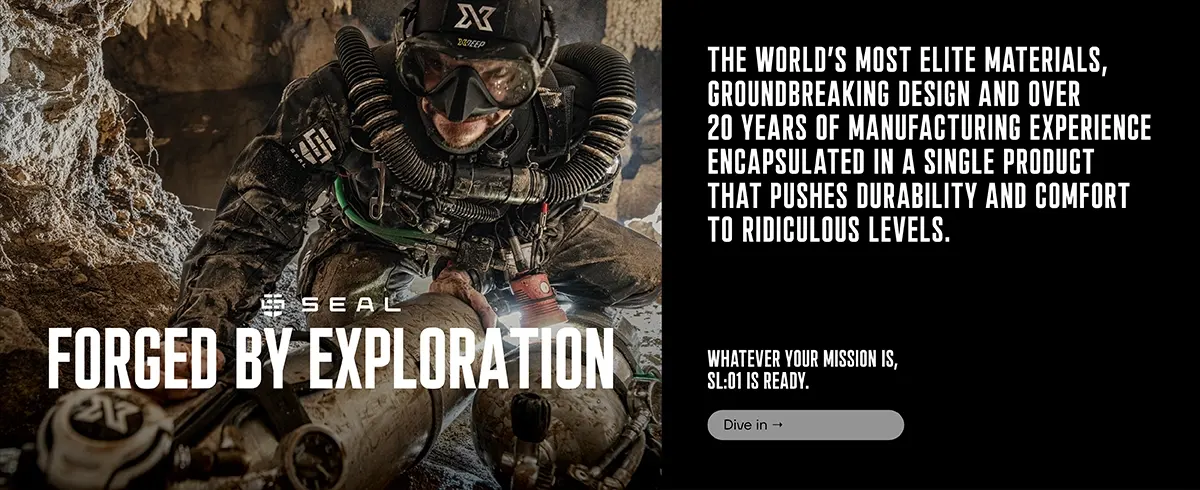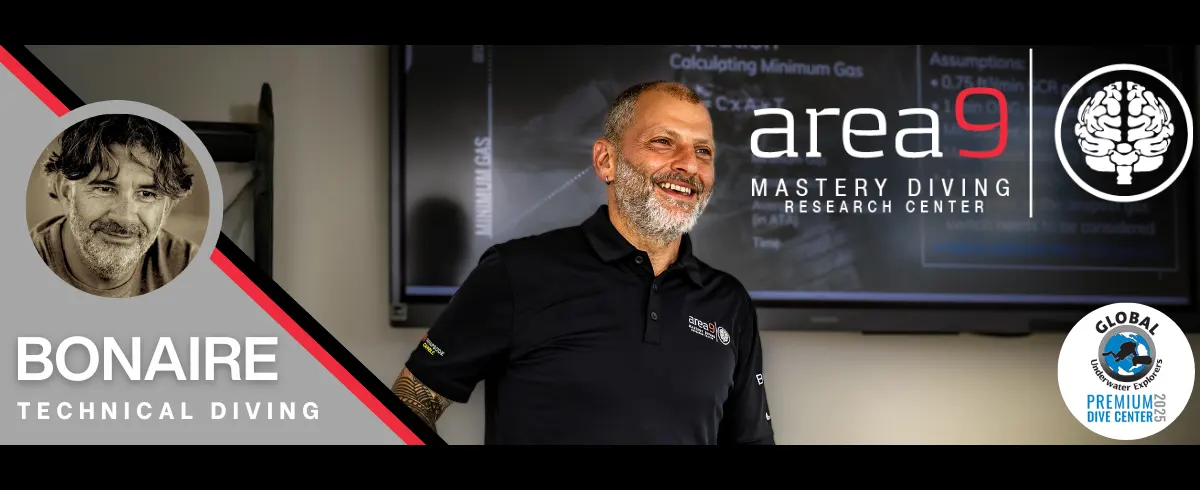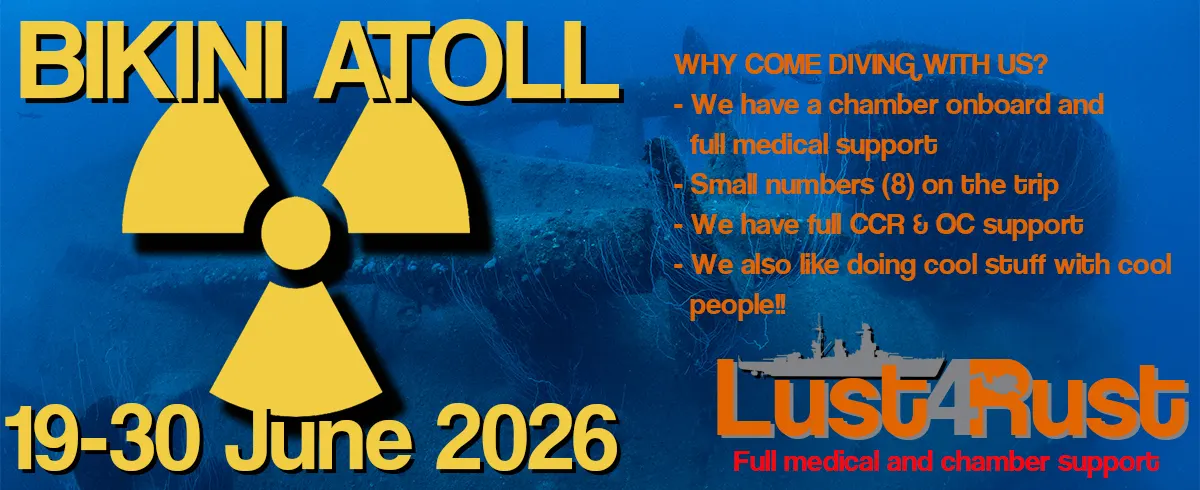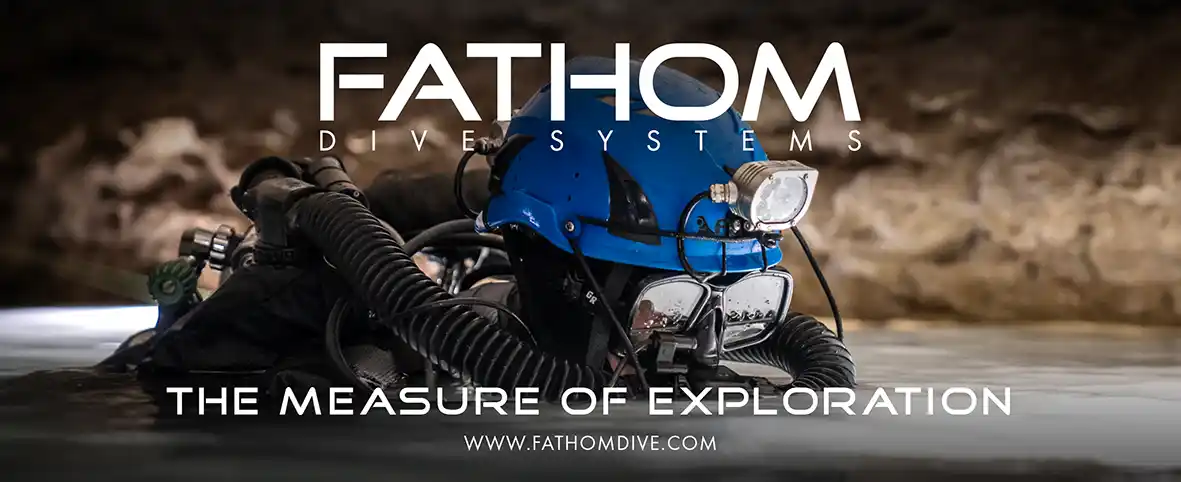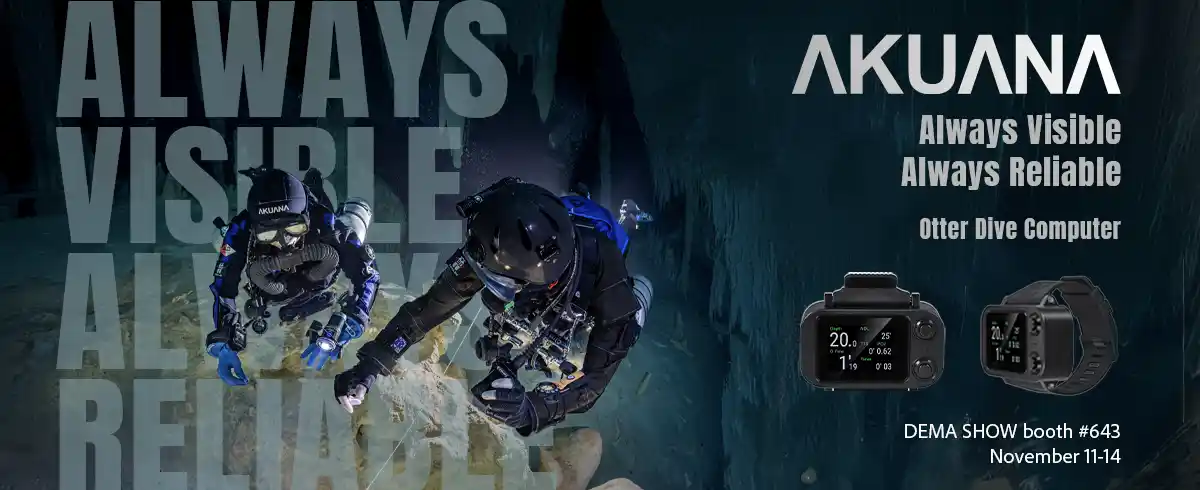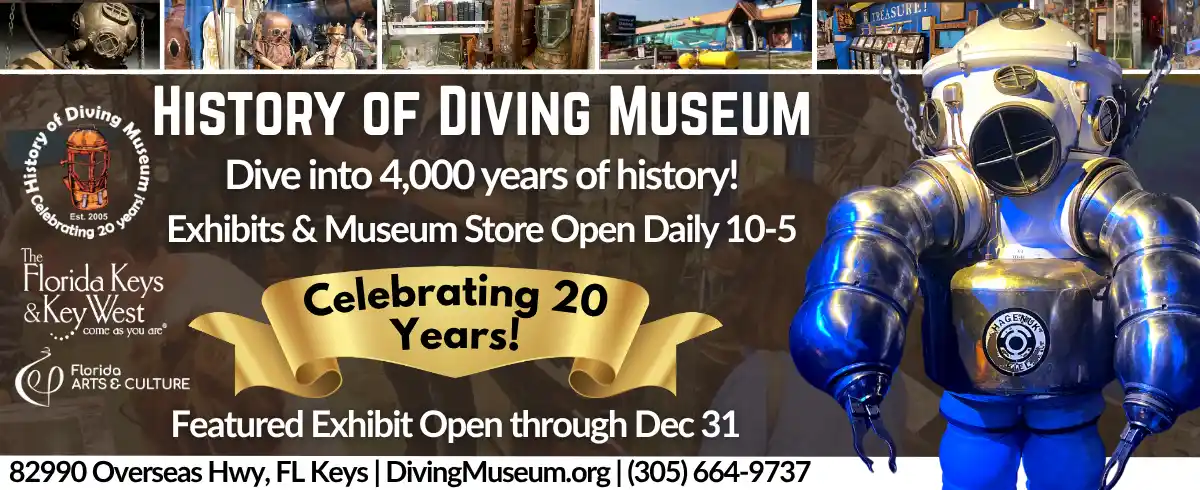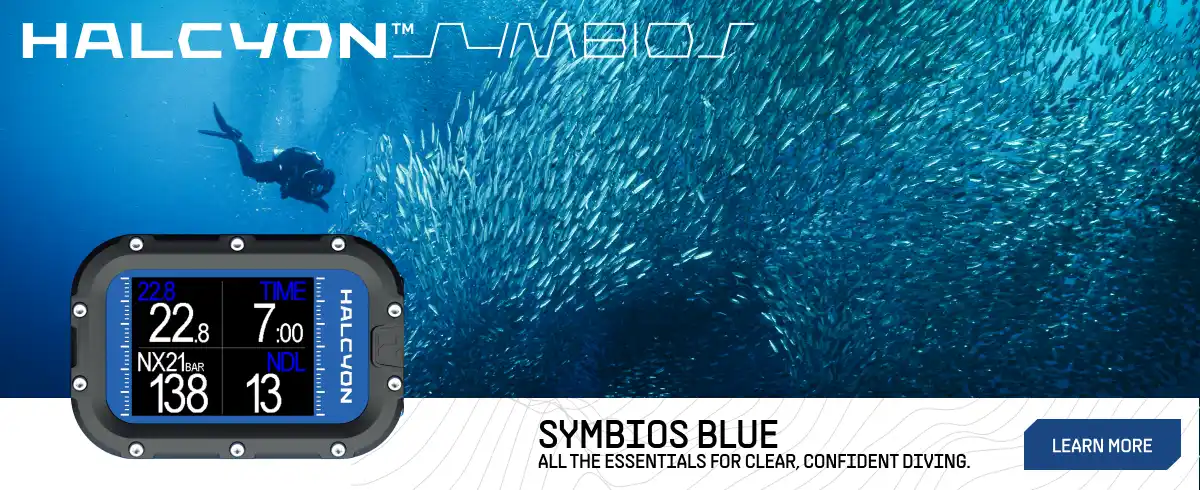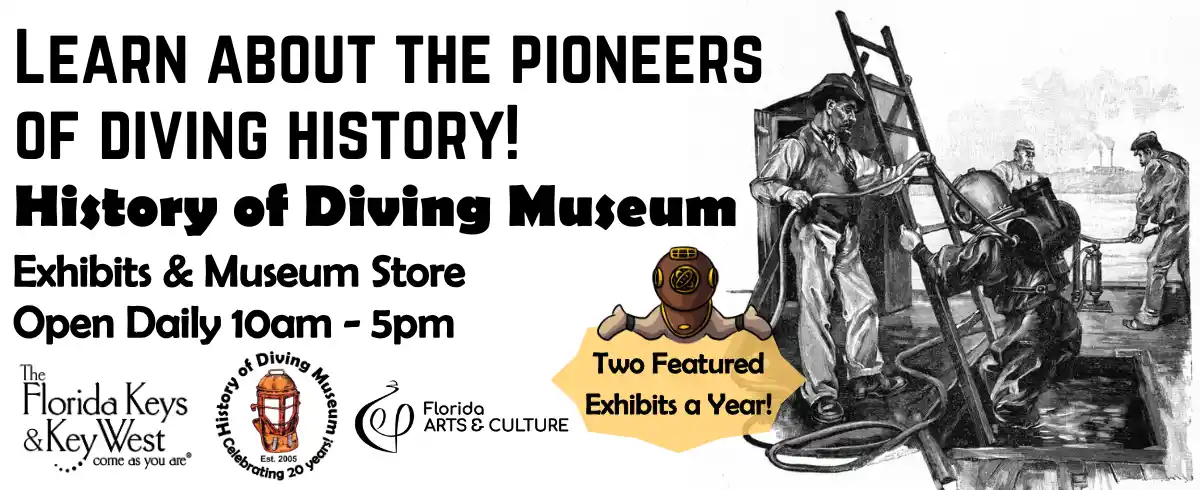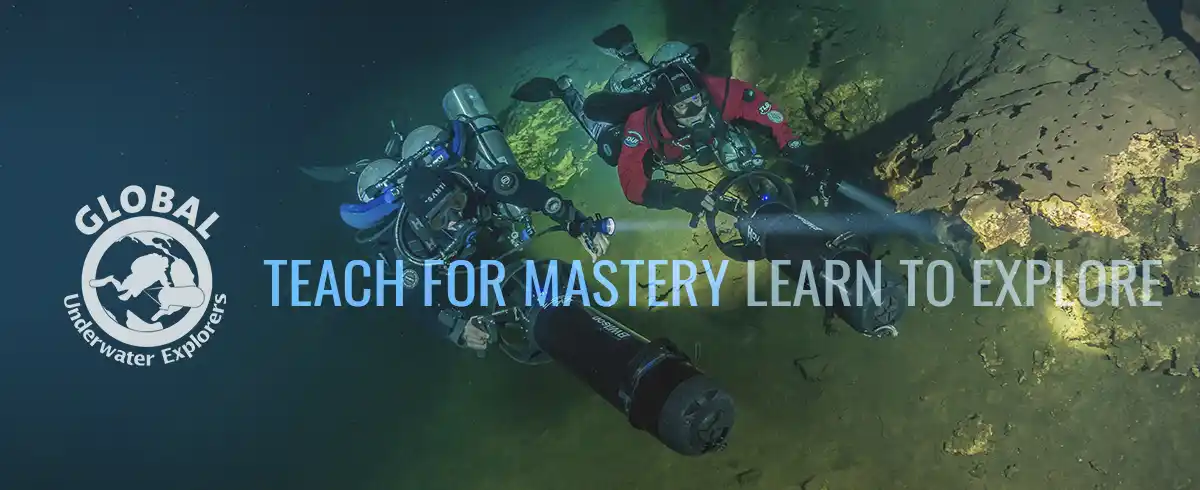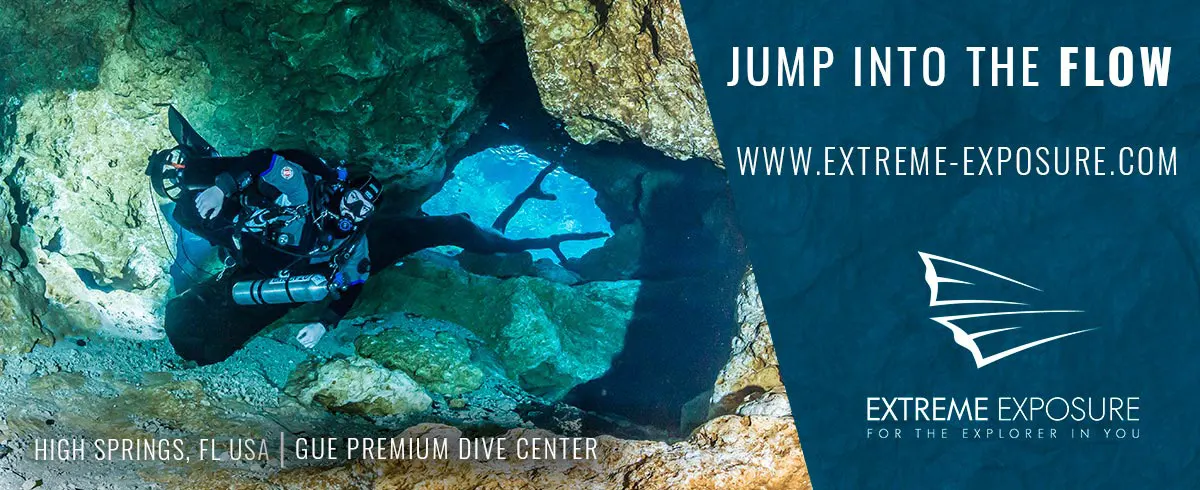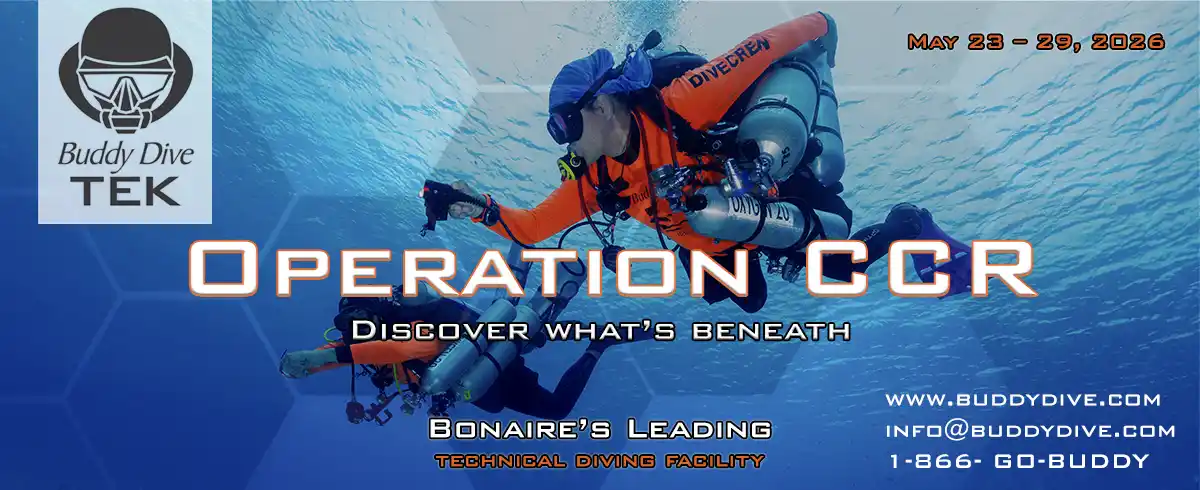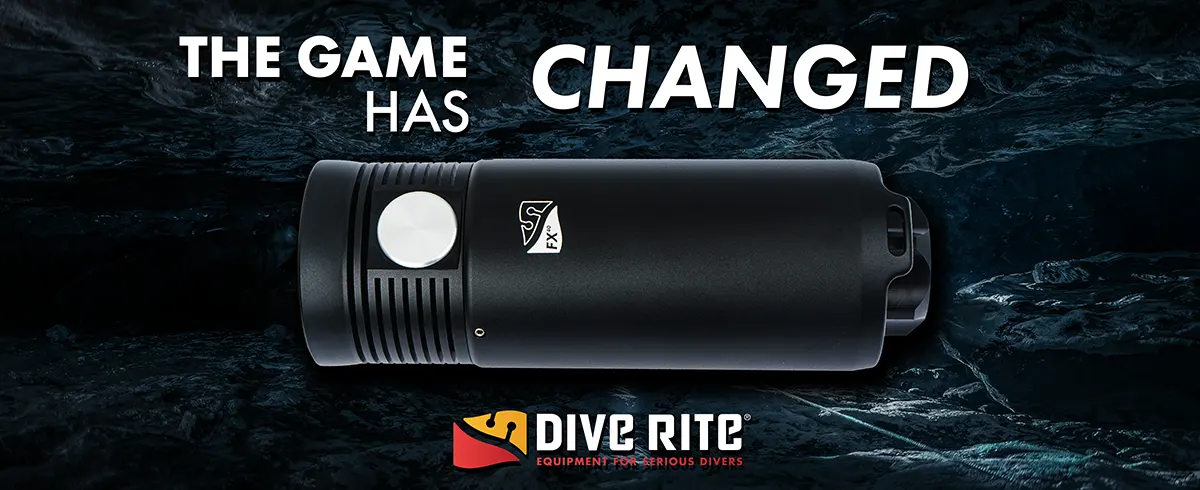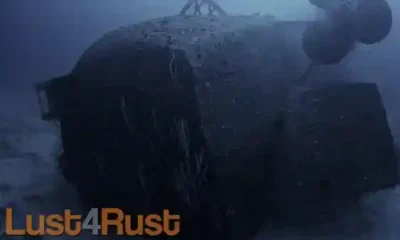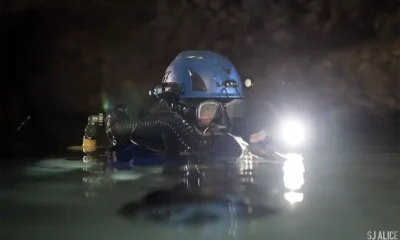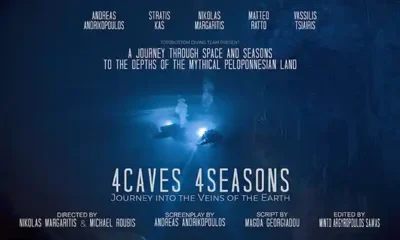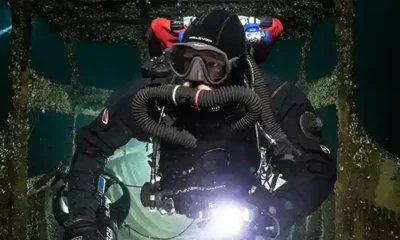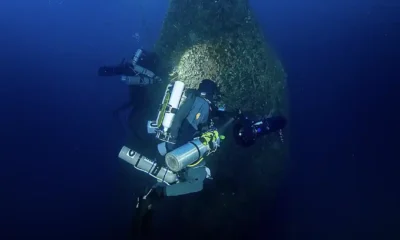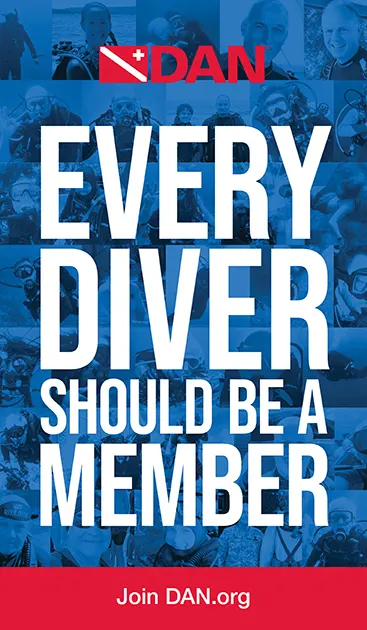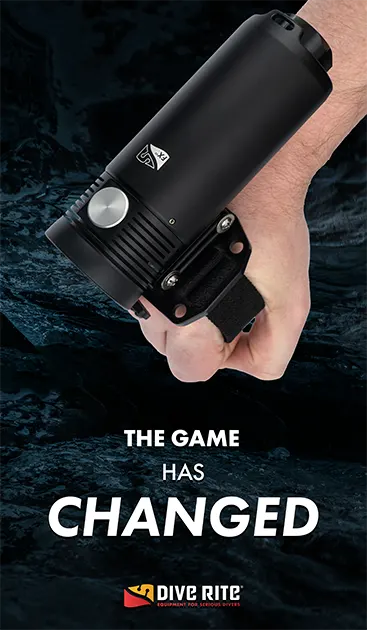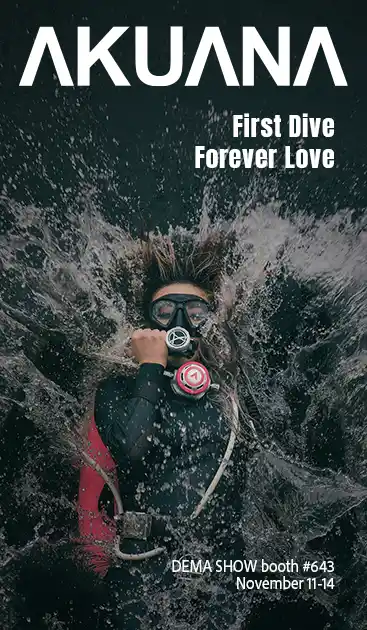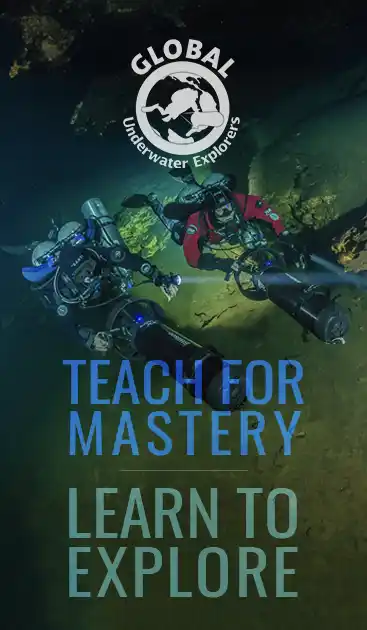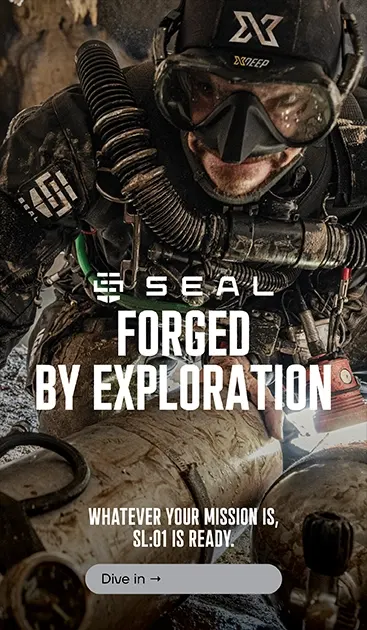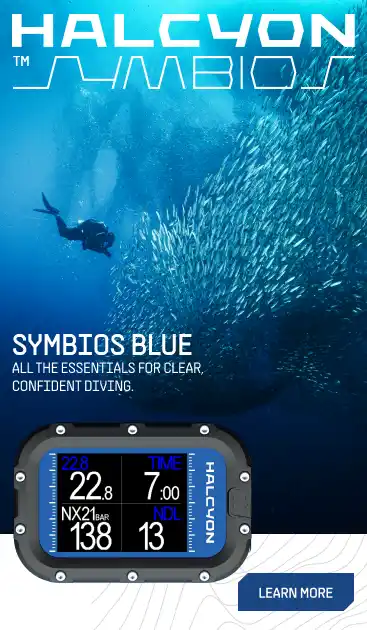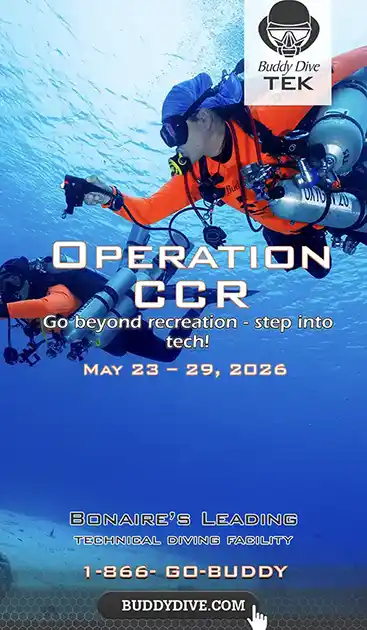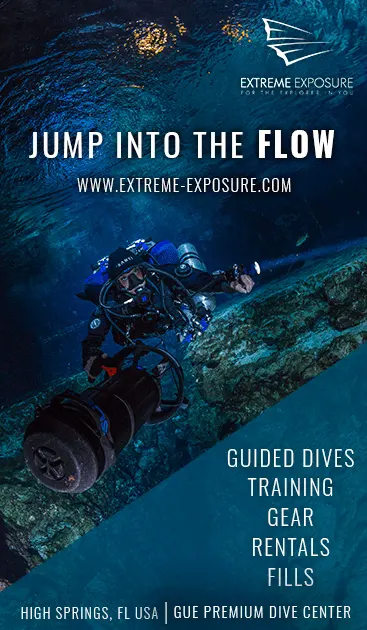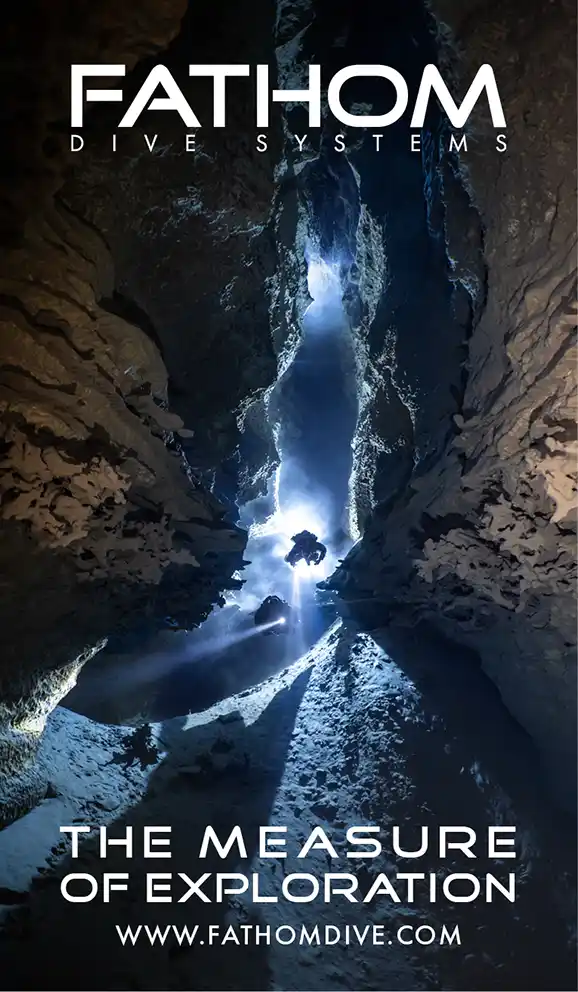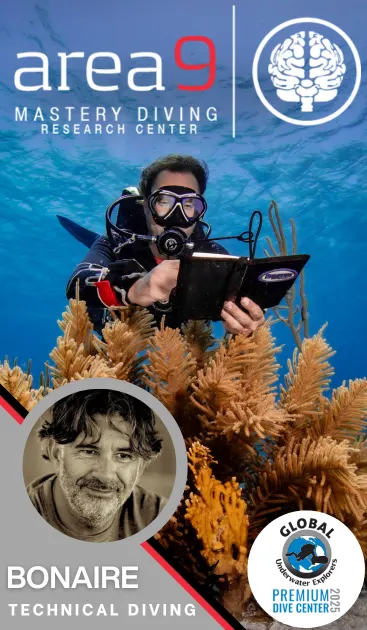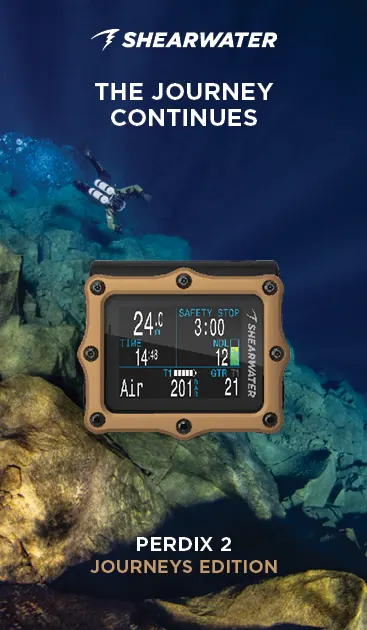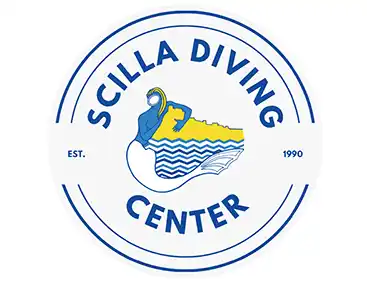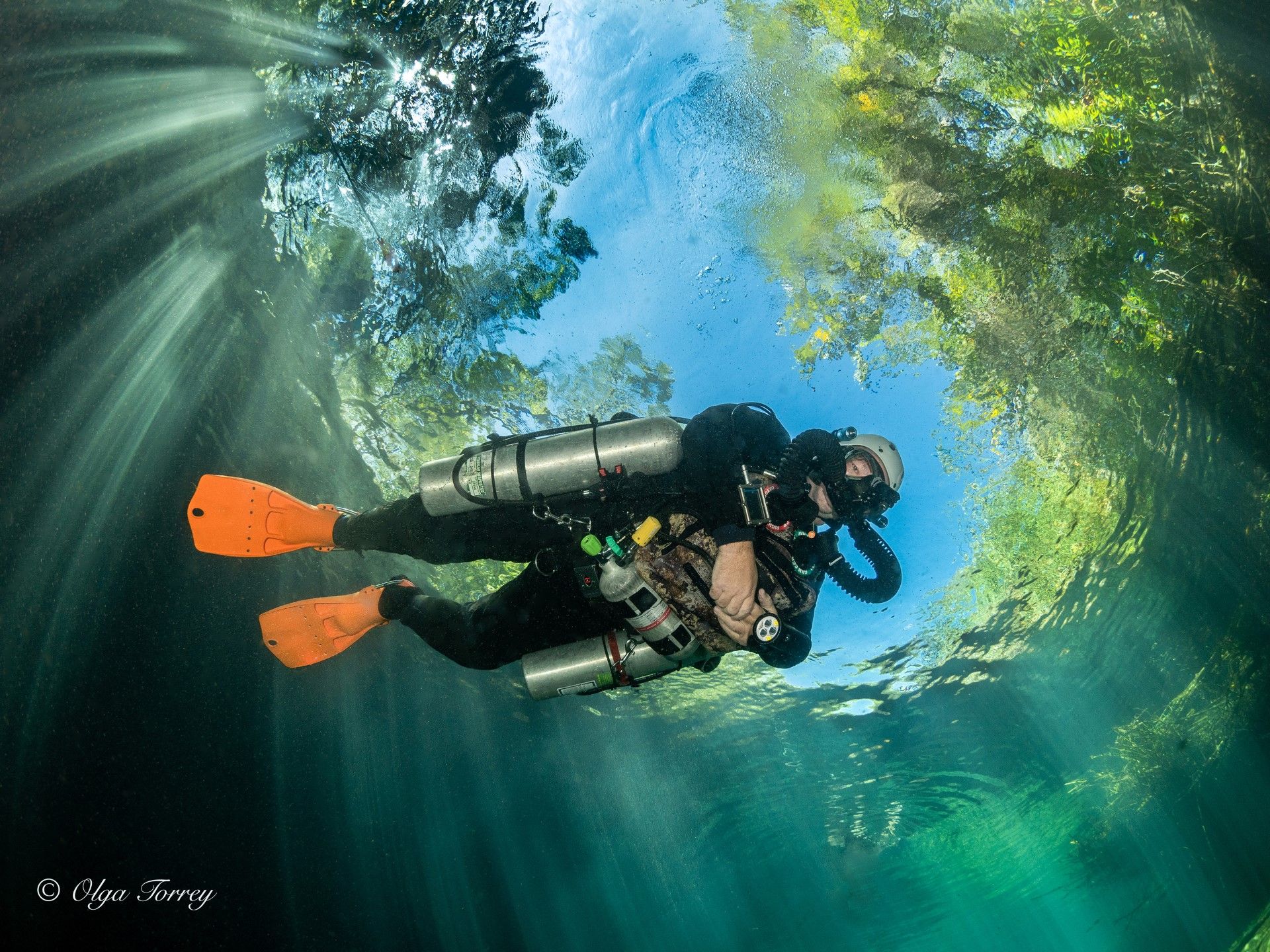
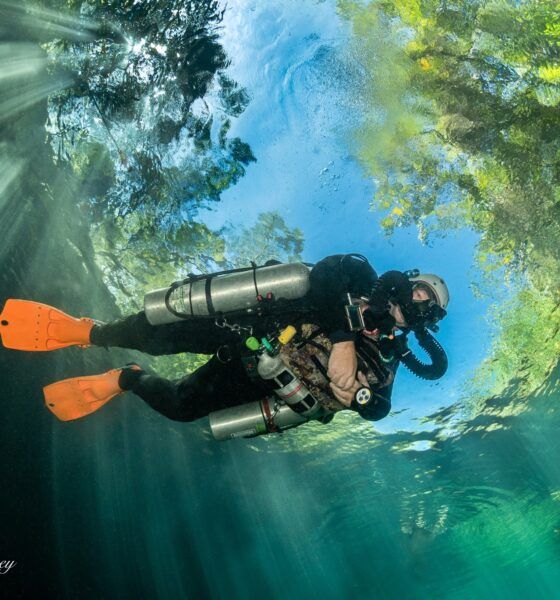
Latest Features
Introducing the Generic Breathing Machine (GBM)
Underwater photographer and tekkie, Larry Cohen, paints a pretty picture and discusses the details of front mounted, mechanical closed circuit rebreather, Generic Breathing Machine (GBM), which launched in 2022.
By Larry Cohen. Images courtesy of Scubatron unless noted. Lead image: The author with his GBM. Photo courtesy of Olga Torrey
I was among the first wreck divers in the NY/NJ area to use a rebreather. I started with a Buddy Inspiration and dove with it for many years before transitioning to the KISS Spirit. Since I was accustomed to a rebreather with a solenoid, it took me some time to adjust to a manual closed circuit rebreather (CCR). However, after a few dives, I became comfortable with the system and found it easier to manage buoyancy and trim while exploring the shallow caves of Mexico.
During my time at Dutch Springs, I got to know Gregory Borodiansky. I would visit Dutch Springs in Pennsylvania to practice photography while Gregory taught rebreather classes. We became close friends and began diving together. Gregory shared his plans to design a chest-mounted rebreather. He intended to incorporate all the features he liked from other units while redesigning any features he found lacking, aiming to create the perfect rebreather. With his extensive experience and expertise in rebreather diving, he is well-qualified to dive various rebreathers. Additionally, Gregory is an instructor trainer with a background in electronic engineering and computer science within the telecom industry, which uniquely positions him to design such a device.
I watched with great interest as Gregory arrived at Dutch with a prototype of his machine. Its small size was intriguing, and from the very beginning, it performed exceptionally well. Each week, he introduced new and improved features. Gregory, equipped with his new, compact rebreather, made an excellent photo subject. It was enjoyable to document this innovative device.
Gregory aimed to make rebreather diving as easy as diving with open circuit systems. He continued to refine the design until he achieved that goal, planning to create a rebreather for his personal use. This rebreather could serve as a primary life support system or as a backup when using another rebreather for deep dives.

Other divers noticed Gregory’s new rebreather and expressed interest in acquiring one. This is how Scubatron’s Generic Breathing Machine (GBM) was born. After several years of using the KISS and now primarily cave diving in Mexico, I decided to try the GBM. I consulted with our mutual friend Mike S. Netto, an International Association of Nitrox & Technical Divers ( IANTD) instructor trainer/board adviser. He was an early GBM user and one of the first IANTD instructors besides Gregory. Compared to the other units I am certified to dive with, the GBM is a game changer. It has significantly improved my buoyancy and trim with minimal effort.
The International Association of Nitrox & Technical Divers (IANTD) serves as the training agency for the GBM, offering access to a global network of instructors. I completed the crossover class with Gregory, and not only did we have a fantastic time in the cenotes of the Yucatán, but I also gained a deeper appreciation for the finer points of the GBM’s design.
Diving Into the GBM
Setting up the GBM the day before the dive is quick and straightforward. The loop hoses have threaded connection points, making assembly effortless. They connect to a T-piece on both the right and left sides. The right-hand T-piece features a dump valve, while the left side is equipped with an automatic diluent valve (ADV) that also allows for manual addition of diluent. Both valves are easily accessible.

The compact case, made from 1600 Denier nylon fabric, houses the counter lungs, electronics, and scrubber canister. The O2 tank is conveniently mounted beneath the case. I have a transmitter on my O2 regulator to monitor the gas pressure on my Shearwater Nerd computer.
An O2 sensor calibration kit allows for easy calibration without wasting oxygen. This kit includes a hose that connects to the canister, where the left-hand counter is attached, and to the gas-out hose. Performing both positive and negative pressure tests is very easy.
Filling the scrubber canister that holds 5.5 pounds of scrubber material is straightforward. CE testing is done at a temperature of 40F, with a breathing rate of 20 breaths per minute with 2 liters per breath (thus 40LPM) and 1.6 liters per minute (LPM) of CO2 injection. The GBM’s canister was effective for 200 minutes (3 hours and 20 minutes) during testing.


In non-CE testing in a water temperature of 67F, 15 breaths per minute, 1.5 liters per breath (22.5LPM), and 0.9LPM of CO2 injection, the canister’s endurance increased to 429 minutes (7 hours and 9 minutes). This means I can dive for several days without changing the scrubber.
I use the rebreather primarily for shallow dives, but the GBM has been tested and is frequently used at depths of up to 330 feet. Both the canister and the counterlung are equipped with water traps, which help to keep the system dry. I have found the GBM to be the driest breathing rebreather than any of the others I have owned.
The diluent gas is carried off-board and doubles as the open circuit bailout. The chest-mounted design allows the GBM to work effectively with tanks of any size, whether in side-mount or back-mount configurations. This makes it an easy addition to a diver’s existing gear. Depending on the dive, I use 80s or 40-size tanks in side-mount configuration while exploring the caverns and caves of Mexico. I plan to test the GBM with a back-mounted 80 for open ocean dives less than 130 feet.



My GBM is equipped with two solid-state sensors and two analog sensors. The sensors are in a sensor pod that securely bayonets onto the canister. Gregory has designed electronics that convert readings from the solid-state sensors, allowing my Shearwater Nerd and Petrel to display the information. My Nerd displays two analog sensors and one solid-state sensor, while the Petrel displays the other solid-state sensor. Having two different types of sensors visible on separate computers while diving is reassuring.
The GBM does not utilize a solenoid to control the amount of O2 injected into the loop; instead, it is equipped with an adjustable needle valve. This valve does not require calibration with a regulator. The diver can easily adjust the oxygen flow while underwater. This design offers greater flexibility than a constant flow valve and is less susceptible to failure than a solenoid. The needle valve is on the gas block, where the diluent and oxygen hoses connect. On the opposite side, a hose feeds oxygen into the loop. This design enables me to locate and adjust the flow of oxygen easily. Additionally, the block is equipped with manual buttons for both oxygen and diluent, with the diluent button raised for easy identification by touch.

Dive, Dive, Dive!
Attaching and preparing the rebreather at the dive site is a hassle-free experience. I do follow a checklist for safety. The rebreather includes a carry strap that connects with fast clips on the top of the case. Once the strap is removed, the fast clips attach the GBM to my shoulder harness. Bungees on my waist strap connect to the rebreather’s bottom plate with bolt snaps. The material loops on the case allow for neat routing of cables and hoses, preventing any dangling. Whether I wear a wetsuit or a drysuit, the rebreather feels comfortable when secured to my harness.

The dimensions of the GBM are 12 x 14 x 5.7 inches, and it weighs 15.4 pounds (25 pounds with an O2 tank and scrubber), making it convenient when traveling with carry-on luggage. Its compact size also allows for easy transport to cavern entrances. When diving in a tight cave like Cenote Minotauro, the small size makes maneuvering through narrow passageways easier—a challenge I experienced with my back-mounted KISS Spirit. Minotauro features multiple levels and depth changes, and the GBM facilitates proper trim and buoyancy adjustments even with variations in pressure.

The Diver’s Shut Off Valve (DSV) is lightweight and easy to operate with one hand. It comes with a comfortable retaining strap that helps prevent jaw fatigue, and if a diver becomes unconscious, the strap keeps the DSV securely in place for added safety. I must close the DSV and switch to my open circuit regulator to bail out. Gregory does not believe in bailout valves (BOV). A BOV is a second-stage open circuit regulator integrated into the mouthpiece, allowing a diver to toggle between closed and open circuits easily. BOVs enable a quicker bailout but are susceptible to failures. I have had BOVs on all my other rebreathers and have never experienced a failure; however, the additional weight caused jaw fatigue. These thoughtful features make the rebreather a pleasure to dive. However, I’m currently finding it challenging to operate my inflator since it is located underneath the case. I plan to attach the inflator to the side of the case for better accessibility.


Carrying my camera presents a unique challenge. I have always clipped it to a D-ring on my shoulder, keeping it close to my chest when traveling inside a cave or wreck. Since I wear the rebreather on my chest like a kangaroo, I need to find a comfortable way to carry the camera. A practical solution is to leave the camera clipped to the D-ring on my shoulder and keep it tucked under my arm. I can take photographs from any position without increasing breathing resistance, even upside down. The GBM has enhanced my photographic creativity for this reason.
Disassembling and cleaning the GBM is easier and quicker than other rebreathers I have owned. All parts can be quickly taken apart. The counter lungs, DSV, and hoses can be submerged in a bucket for cleaning and disinfection.
Gregory is continually improving the rebreather by adding new features. One of the most exciting updates is the introduction of wireless computers. Additionally, a small canister that holds 1,400 grams of scrubber material is now available. The total weight of the rebreather, when equipped with an O2 tank and scrubber, is approximately 20 pounds. This model is called the RTD-20, which stands for “Ready to Dive under 20 lbs.” Standard CE testing rates this canister for 120 minutes.
The rebreather is easy to set up and quick to disassemble, allowing me to spend more time underwater. Monitoring four O2 sensors across two computers gives me confidence that I know my partial pressure of oxygen that I could adjust with the needle valve. Switching to the GBM has significantly improved my diving experience.
DIVE DEEPER
Diving Reality Show: Full Interview w/Gregory Borodiansky Innovator in TEC Diving Technology. DEMA SHOW 2024 by Gaston Flageat
Advanced Diver Magazine: GBM – Chest Mounted Rebreather Interview with Gregory Borodiansky by Curt Bowen

Larry Cohen began diving in 1989. With a commercial and editorial photography background, he started capturing underwater photographs right from the beginning. He is a former president of The NYC Sea Gypsies and a co-founder of NYUPS. Additionally, Larry has been a crew member on the NJ dive boat, The John Jack. His photographs have been featured in various magazines and websites worldwide, and he has presented at many diving shows. Larry also served as the underwater photography professional at B&H Photo in NYC. To view his work, visit www.liquidimagesuw.com.

